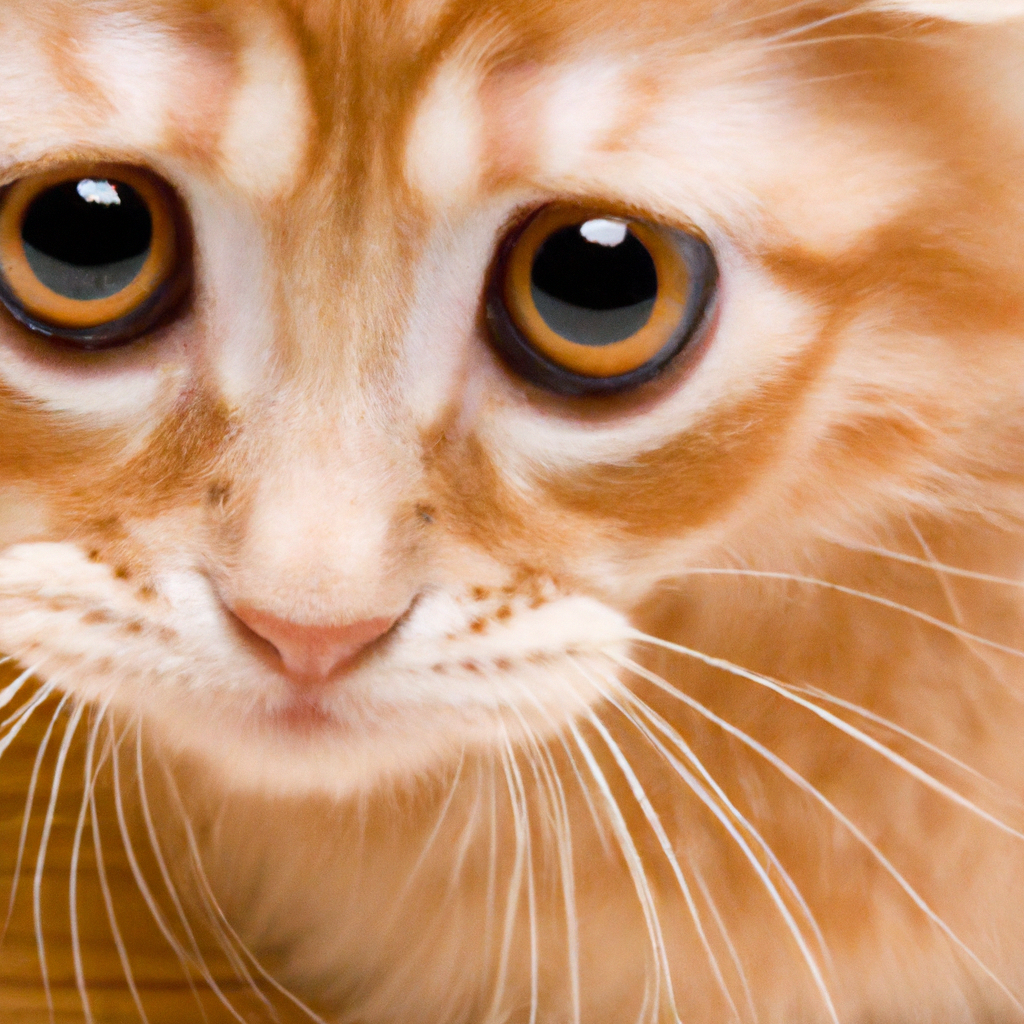If you’re a cat owner, you know just how important it is to keep your feline friend healthy and happy. One common issue that can arise is a urinary tract infection (UTI), which can cause discomfort and distress for your furry companion. But worry not, because in this article, we’ll explore some simple yet effective ways to treat your cat’s UTI right in the comfort of your own home. With a few easy steps, you’ll be able to provide relief for your beloved cat and get them back to their sprightly selves in no time.


1. Understanding UTIs in Cats
Symptoms of UTIs in Cats
If you suspect that your cat might have a urinary tract infection (UTI), it’s important to recognize the common symptoms. These can include frequent urination, straining to urinate, visible blood in the urine, urinating outside the litter box, and vocalizing or showing signs of pain during urination. Additionally, some cats may exhibit behavior changes, such as increased irritability or lethargy. Keeping an eye out for these symptoms can help you identify if your cat is experiencing a UTI and take appropriate action.
Causes of UTIs in Cats
There are various factors that can contribute to the development of UTIs in cats. Bacterial infections are the most common cause, usually originating in the urinary tract itself or from other parts of the body and spreading to the urinary system. Additionally, certain underlying medical conditions, such as bladder stones or tumors, can make cats more susceptible to UTIs. Stress, poor hygiene, and a compromised immune system can also increase the risk. Understanding the underlying causes can help you address them and prevent UTIs in your furry friend.
Diagnosing UTIs in Cats
To accurately diagnose a UTI in your cat, it’s crucial to consult with a veterinarian. They will perform a thorough physical examination, review your cat’s medical history, and likely conduct diagnostic tests. These tests may include a urinalysis to analyze the urine for the presence of bacteria, blood, or abnormalities, as well as urine culture to identify the specific bacteria causing the infection. Other diagnostic tools, such as imaging scans or blood tests, may also be recommended in some cases. Consulting a veterinarian for a proper diagnosis is essential for effective treatment.
2. Veterinary Consultation
Importance of Veterinary Consultation
When it comes to your cat’s health, seeking veterinary consultation is of utmost importance. A veterinarian is trained to evaluate and diagnose underlying medical conditions accurately. They will provide expert guidance and treatment options specific to your cat’s individual needs. Remember, self-diagnosis and treating your cat’s UTI at home without professional advice can have consequences and potentially delay proper treatment. Consulting with a veterinarian ensures that your feline friend receives the best care possible.
Signs to Seek Veterinary Help
While treating your cat’s UTI at home can be possible in some cases, it is crucial to recognize the signs that indicate a veterinary consultation is necessary. If your cat’s symptoms worsen, such as the presence of severe pain, decreased appetite, or if they become lethargic, it is important to seek immediate veterinary attention. Additionally, if your cat has a history of UTIs, is very young or old, or has other underlying health conditions, it is always recommended to consult a veterinarian for appropriate guidance and treatment.
Benefits of Early Diagnosis
Early diagnosis plays a vital role in successfully treating and managing your cat’s UTI. It allows for timely initiation of treatment, which can help alleviate discomfort, prevent complications, and minimize the risk of recurrent infections. Identifying the underlying cause of the UTI also aids in preventing future occurrences. By seeking early veterinary consultation, you can ensure that your beloved cat receives the necessary care to recover and maintain their overall health.
3. Home Care for Cats with UTIs
Increasing Water Intake
Encouraging your cat to drink an adequate amount of water is crucial when it comes to managing UTIs. Providing fresh and clean water in multiple locations can entice your cat to stay hydrated. Some cats prefer running water, so consider using a cat water fountain. Wet food can also contribute to increasing water intake, as it contains a higher moisture content compared to dry kibble. Monitoring your cat’s water consumption and taking steps to promote proper hydration can aid in flushing out bacteria and supporting urinary tract health.
Providing a Nutritious Diet
A well-balanced, high-quality diet is essential for your cat’s overall health and can have a positive impact on managing UTIs. Consult with your veterinarian to ensure that your cat is receiving a diet that meets their specific nutritional requirements. Some diets are specifically formulated to promote urinary health, as they contain ingredients that help maintain the proper pH level in the urine and reduce the likelihood of crystal formation. Feeding your cat a nutritious diet can support their immune system and contribute to their overall well-being.
Maintaining Hygiene and Cleanliness
Proper hygiene and cleanliness are essential in managing and preventing UTIs in cats. Regularly clean your cat’s litter box, ideally on a daily basis, to remove any waste or bacteria. Use unscented litter and avoid liners, as these can potentially harbor bacteria. It’s also important to create a calm and stress-free environment for your cat, as stress can weaken the immune system and increase the susceptibility to UTIs. By maintaining a clean environment and reducing stress factors, you can help prevent UTIs and promote your cat’s well-being.
4. Natural Remedies for Cat UTIs
Cranberry Supplements
Cranberry supplements are often recommended as a natural remedy for UTIs in cats. Cranberries contain compounds that can help prevent bacteria from adhering to the urinary tract walls, making it more difficult for them to cause an infection. However, it’s important to note that cranberry supplements should not be used as a substitute for veterinary care. Consult your veterinarian before introducing any new supplements to your cat’s diet, as they can provide guidance on the proper dosage and ensure it is safe for your cat’s specific condition.
D-Mannose Supplementation
D-Mannose is a type of sugar that can also be used as a natural remedy for UTIs in cats. It works by preventing bacteria from adhering to the urinary tract walls and helps flush them out of the system. As with any natural remedy, it’s crucial to consult with a veterinarian before administering D-Mannose to your cat. They can advise on the appropriate dosage and discuss potential interactions with any other medications your cat may be taking.
Herbal Remedies
Certain herbal remedies, such as uva ursi and marshmallow root, are believed to have antimicrobial and soothing properties that can support urinary tract health. However, it is essential to exercise caution when using herbal remedies and consult with a veterinarian beforehand. They can provide guidance on the safety and appropriate usage of these herbal remedies, ensuring that they are compatible with your cat’s specific needs.


5. Antibiotics for UTIs in Cats
Importance of Antibiotics
Antibiotics play a crucial role in treating UTIs in cats, particularly those caused by bacterial infections. They are prescribed to eliminate the bacteria responsible for the infection and prevent its spread. It is important to note that antibiotics should only be administered under veterinary guidance. Your veterinarian will determine the appropriate antibiotic based on the specific bacteria causing the infection and your cat’s overall health. Follow their instructions regarding dosage, frequency, and duration of the antibiotic treatment for optimal results.
Prescription Medications
A variety of prescription medications are available to treat UTIs in cats, depending on the underlying cause and severity of the infection. Your veterinarian may prescribe antibiotics such as amoxicillin, cephalexin, or trimethoprim-sulfamethoxazole. It is essential to follow the prescribed treatment plan and complete the full course of medication, even if your cat’s symptoms improve. Ceasing treatment prematurely may lead to incomplete eradication of the infection and increase the risk of recurrence.
Dosage and Administration
Administering antibiotics to cats requires careful attention to detail. Follow your veterinarian’s instructions regarding the dosage and administration of the medication. Some antibiotics may need to be given with food to minimize potential gastrointestinal side effects, while others may require an empty stomach for optimal absorption. Be sure to monitor your cat closely during the treatment period for any adverse reactions and report any concerns to your veterinarian promptly.
6. Preventing UTIs in Cats
Maintaining a Clean Litter Box
A clean litter box is essential in preventing UTIs in cats. Regularly scoop and clean the litter box to remove urine and feces, which can harbor bacteria. Avoid using scented litters or harsh cleaning agents, as these can potentially irritate your cat’s sensitive urinary tract. Providing multiple litter boxes in different locations can also reduce competition and stress, promoting proper litter box usage. By maintaining a clean and comfortable litter box environment, you can minimize the risk of UTIs and help your cat maintain good urinary health.
Promoting Regular Urination
Encouraging your cat to urinate regularly can help promote urinary tract health and prevent the buildup of bacteria. Ensure that your cat has easy access to a litter box at all times and place additional litter boxes in different areas of your home. Some cats may benefit from a larger litter box or one with a lower entrance, especially for older cats or those with mobility issues. Providing a stress-free environment and offering opportunities for your cat to relieve themselves regularly can contribute to a healthy urinary system.
Encouraging Physical Activity
Regular physical activity is not only important for your cat’s overall health but can also help prevent UTIs. Engage your cat in interactive play sessions to encourage exercise and mental stimulation. Physical activity promotes healthy blood flow, which can aid in maintaining good urinary tract function. Additionally, exercise can help reduce stress, which is known to weaken the immune system and increase the susceptibility to infections. By incorporating playtime into your cat’s daily routine, you can help support their urinary health and overall well-being.
7. Monitoring and Follow-Up
Observing Symptoms Improvement
After initiating treatment for your cat’s UTI, it’s important to closely monitor their symptoms. Keep track of any changes in their urination habits, such as frequency, straining, or the presence of blood. Also, assess their overall behavior and well-being to ensure that they are responding positively to the treatment. If you notice any persistent or worsening symptoms, it is important to contact your veterinarian for further guidance. Regular monitoring allows you to gauge the effectiveness of the treatment and make any necessary adjustments.
Scheduled Veterinary Check-ups
Even after successful treatment, it is essential to schedule regular check-ups with your veterinarian. They can perform follow-up tests to ensure that the infection has been fully resolved and monitor your cat for any recurrence or complications. Regular veterinary visits also provide an opportunity for your cat to receive necessary vaccinations and preventive care. By maintaining a proactive approach to your cat’s health, you can minimize the risk of UTIs and promote their overall well-being.
Preventing Recurrence
To prevent recurrent UTIs in your cat, it is crucial to address any underlying causes or risk factors. This may involve treating any underlying medical conditions, such as bladder stones or diabetes, and implementing preventive measures. Following the recommendations provided by your veterinarian, such as appropriate diet, hydration, and litter box management, can help reduce the likelihood of future UTIs. Additionally, maintaining a stress-free environment and providing ample opportunities for your cat’s physical and mental stimulation can contribute to their overall urinary health.
8. Potential Complications
Recurrent UTIs
Left untreated or inadequately managed, UTIs can lead to recurrent infections in cats. Recurrent UTIs can be frustrating for both you and your feline companion and may require more intensive treatment protocols to address the underlying issue. It is important to identify and address any predisposing factors or underlying conditions contributing to the recurrence of UTIs to prevent further complications.
Urinary Blockage
In some cases, UTIs can progress to urinary blockages, especially in male cats. This occurs when crystals or stones form in the urinary tract, blocking the flow of urine. Urinary blockages are a medical emergency and can be life-threatening if not promptly treated. Signs of a urinary blockage include straining to urinate without producing urine, vocalizing in pain, and lethargy. If you suspect your cat may have a urinary blockage, seek immediate veterinary care.
Kidney Damage
Untreated or severe UTIs can potentially result in kidney damage. The kidneys play a vital role in filtering waste products and maintaining overall kidney function. When bacteria from a UTI travel up to the kidneys, they can cause inflammation and damage to the kidney tissues. Kidney damage can lead to a variety of health complications and may require specialized treatment. Early diagnosis, treatment, and preventive measures are crucial in reducing the risk of kidney damage in cats with UTIs.
9. When to Seek Emergency Care
Severe Pain and Discomfort
If your cat is experiencing severe pain and discomfort associated with their UTI, it is important to seek emergency veterinary care. Signs of severe pain can include vocalizing excessively, restlessness, aggression, or panting. These symptoms may indicate a potential urinary blockage or kidney damage that requires immediate attention.
Difficulty Urinating
Struggling to urinate or producing very little to no urine is a critical sign that should not be ignored. This could be an indication of a urinary blockage, which requires immediate veterinary intervention. Obstructed urine flow can quickly become a life-threatening situation for your cat and warrants immediate emergency care.
Blood in Urine
The presence of blood in your cat’s urine, known as hematuria, should be taken seriously. While UTIs can cause blood in the urine, it can also be a sign of more severe underlying conditions. It is important to have your cat evaluated by a veterinarian to determine the cause and appropriate treatment.
10. Conclusion
Importance of Prompt Treatment
Prompt treatment and appropriate veterinary care are crucial when it comes to managing urinary tract infections in cats. By recognizing the symptoms, seeking veterinary consultation, and following recommended treatment protocols, you can ensure that your cat receives the necessary care to recover and maintain their urinary health. Remember, early intervention can help prevent complications and reduce the risk of recurrent infections.
Caring for Your Cat’s UTI at Home
While there are some home care measures you can implement to support your cat’s recovery from a UTI, it is essential to work closely with your veterinarian. Increasing water intake, providing a nutritious diet, and maintaining hygiene and cleanliness can contribute to your cat’s overall urinary health. However, it is important to recognize the limitations of home care and seek professional advice for an accurate diagnosis and appropriate treatment. Your veterinarian is your best resource for ensuring the well-being of your feline companion and preventing future UTIs.

